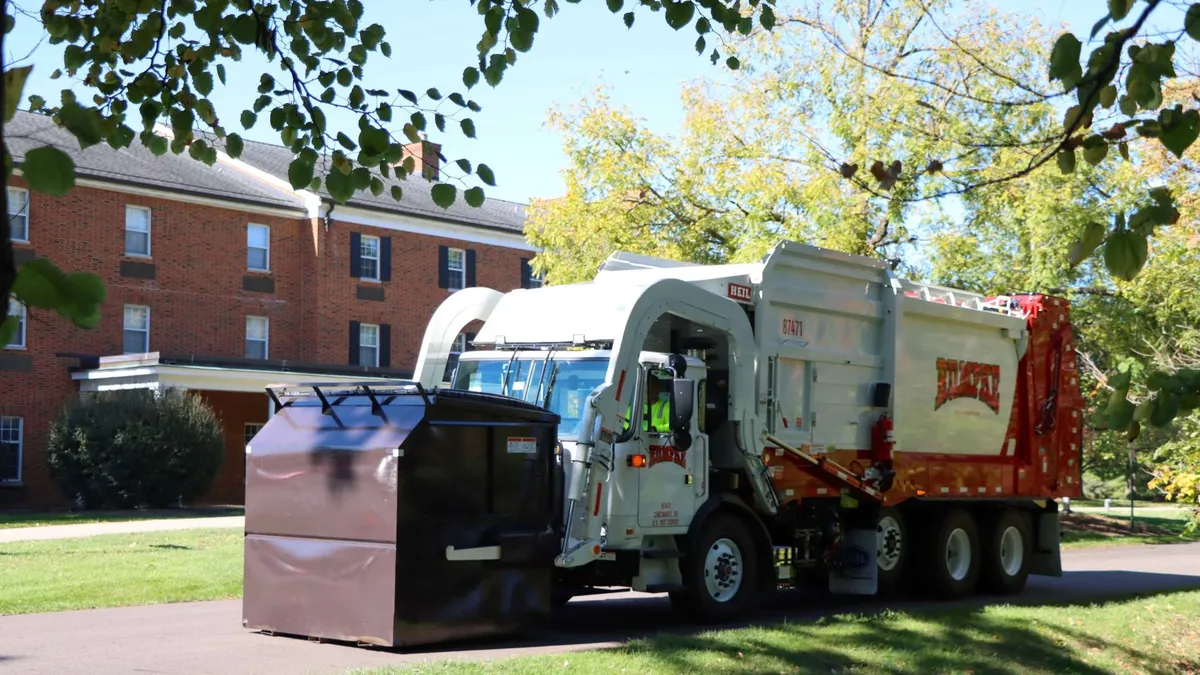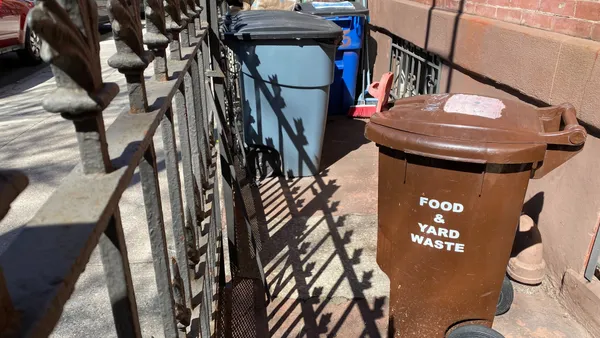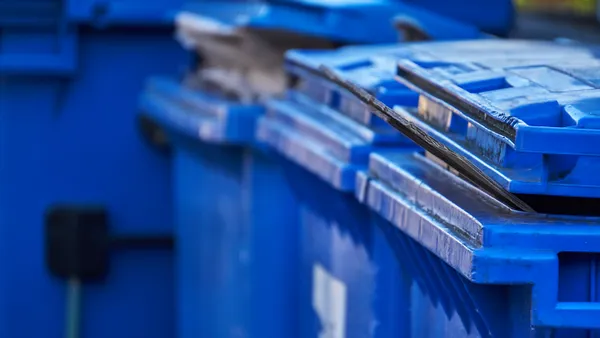Dive Brief:
- Maryland could become the sixth state to adopt an extended producer responsibility program for packaging if Gov. Wes Moore signs SB 901. The bill passed in the final hours of the state’s legislative session on Monday night.
- If signed, the EPR law would cover certain packaging and paper products, including beverage containers. A producer responsibility organization would set fees and reimbursements. Reimbursements to local governments would cover up to half the cost of collection and cover all transportation and processing costs associated with recycling in the state.
- The PRO would be responsible for setting reimbursement rates each year, calculated on a cost-per-ton basis. The bill calls for a reimbursement rate to cover at least 50% of the cost by July 1, 2028, then 75% in 2029 and 90% in 2030.
Dive Insight:
Maryland lawmakers have worked for several years to pass an EPR for packaging bill, with stakeholders calling for a law meant to fit the state’s specific infrastructure, recycling and business needs.
The last time state lawmakers pushed through a major EPR bill was in 2023, but that bill was heavily amended and eventually passed as a law requiring the state to undergo an EPR study and recycling needs assessment.
The assessment, which came out Feb. 21, shared insight on possible infrastructure improvements and offered models to calculate how EPR could improve factors such as recycling rates, material value and workforce recruitment.
That same law also formed an EPR advisory group to deliver policy recommendations to the state’s legislature. That advisory group sent its recommendations to the state legislature last month.
This year, state Sens. Malcolm Augustine and Sara Love introduced SB 901 before the needs assessment and advisory council report were completed, but stakeholders involved in the bill process said the legislation was amended to reflect both public comments and findings from the assessment and advisory group. The bill also calls for the implementation process to incorporate relevant information outlined in the needs assessment.
The bill moved swiftly though the legislature, passing the Senate on March 17, then passing the House and heading to the governor’s desk on April 7. Augustine said passing the bill was one of his major priorities for the session. The program “aligns incentives for all stakeholders to create an economically efficient, environmentally responsible, circular system of managing packaging and paper materials,” he said in an emailed statement. “Less waste in landfills, lower costs for taxpayers, more sustainable products, fewer green house gas emissions, and cleaner communities represent the achievable outcomes of this program.”
Under the bill, a producer responsibility organization, approved by the Maryland Department of the Environment, would register each year starting July 1, 2026. The PRO would have to submit a five-year producer responsibility plan by July 1, 2028, and conduct a statewide needs assessment at least once every 10 years. Circular Action Alliance, a PRO for other state EPR programs, was included on the state advisory council, which some stakeholders have said sets it up to potentially be a top choice as Maryland’s PRO.
The PRO would also be directed to set performance goals for covered materials. That includes setting rates for recycling, reuse, composting, recycled content, and source reduction and contamination reduction.
Such rates would also need to take into account regional cost differences related to population density, distance to a MRF, the “general quality” of covered materials, and average transportation and processing costs.
The PRO also would set producer fees, with funds going toward initiatives such as reuse and recycling infrastructure improvements, including organics recycling infrastructure.
Funding used for improving reuse, composting or recycling in the state must prioritize improvements to existing infrastructure, the bill states. That could include projects such as installing or upgrading sorting and processing facilities. Funding must include investments in market development, it said.
The program would also need to include “incentives to encourage participating producers to engage in waste reduction.”
The bill exempts certain producers from the program, including paper mills that produce containerboard made from 100% postconsumer recycled content and "nonpostconsumer recycled content.” Certain small retailers, as well as food carts and restaurants that offer food that is “consumed immediately and without the need for further preparation” would also be exempt.
Some stakeholders have advocated for Maryland's EPR law to make space for harmonization if the state ever approves a deposit return system for beverage containers. A later amendment acknowledged that process.
The bill also noted that recycling does not include combustion, incineration, energy generation, fuel production and alternative daily cover.
The Product Stewardship Institute supported the bill, noting in February testimony that it will “provide crucial funding from producers to relieve municipalities of the financial burdens they currently face in operating recycling programs.”
The Association of Plastic Recyclers, Trash Free Maryland, and other organizations offered additional written testimony in support of the bill in March, though these organizations all suggested various amendments.
Ameripen called for minor technical changes and noted that the bill aligns some key elements with Minnesota’s EPR law, making it easier for producers to implement. It also applauded the Maryland bill’s requirement to set performance goals.
In a March 25 letter, the Foodservice Packaging Institute said it supported the bill with some amendments, noting that it believed the definition of “paper products” was “extremely broad and may unintentionally include items beyond the intended scope of SB 901.”
“While Maryland has a strong program compared to other U.S. states, there are still significant volumes of recyclable plastics and other materials ending up in landfills, incinerators, and in the environment each year,” added Allison Kustic, APR’s state government relations manager, in a testimony letter.
Several entities opposed the bill, including the American Forest & Paper Association, saying in a statement last week that the process was rushed and that it did not consider the “wide-ranging, negative impacts for the paper industry.” AF&PA criticized the bill sponsors for writing the bill before the results of the needs assessment came out, saying the bill does not reflect the latest data available.
AF&PA typically opposes EPR programs that include paper. It noted that the recycling system for the material is already strong and would be weakened by EPR due to increased costs it believes unfairly burdens paper producers whose products don’t typically end up in curbside bins.
Peter Blair, policy and advocacy director at Just Zero, said his organization was “frustrated” with the way the bill was introduced before the results of the needs assessment and the final report from the advisory council. “This undermines a process that was intended to produce a Maryland-specific program tailored to the state’s unique recycling and waste challenges. Instead, SB 901 is just another industry-developed bill that fails to position Maryland for real progress in reducing waste and improving recycling outcomes,” he said in an email.
The bill delegates most major decisions to the PRO, which Blair said is unbalanced because it doesn’t offer sufficient oversight from the Maryland Department of the Environment or stakeholders.















